Without Place, Without Time: In LA for Sterling Ruby & OTW by Vans
|PHILLIP PYLE
A few weeks ago, between suffering from jet lag and an irrational but unshakable desire for the Hailey Bieber smoothie at Erewhon, I toured Sterling Ruby’s studio in Vernon, California—a city technically outside LA, yet close enough that it’s difficult to discern between the warehouses of the suburb and those downtown. Upon entering the labyrinth of buildings that make up the artist and designer’s studio, my heavy-eyed sense of nowhere (and no time) was awoken by the possibilities of space and time’s undoing.
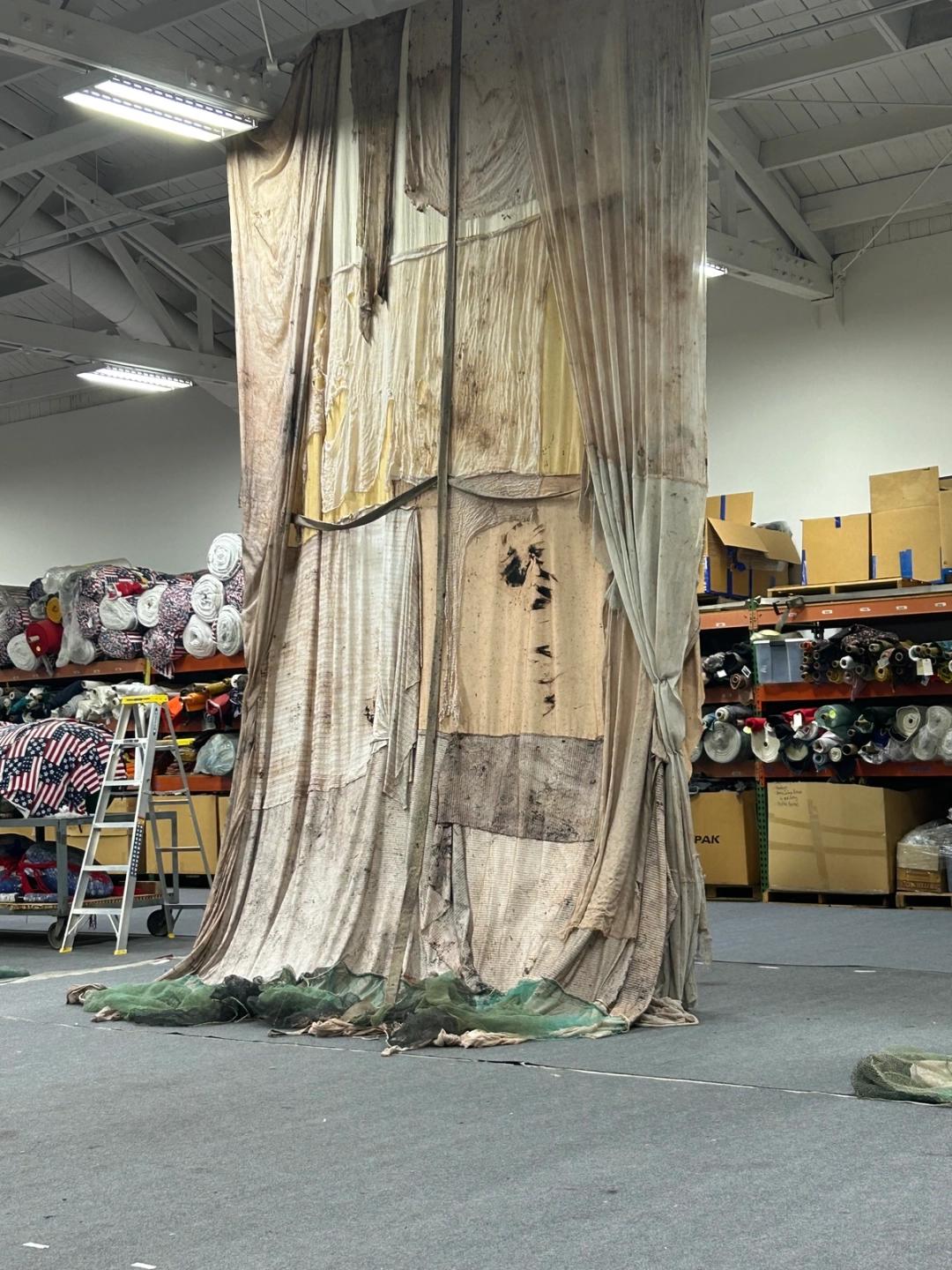
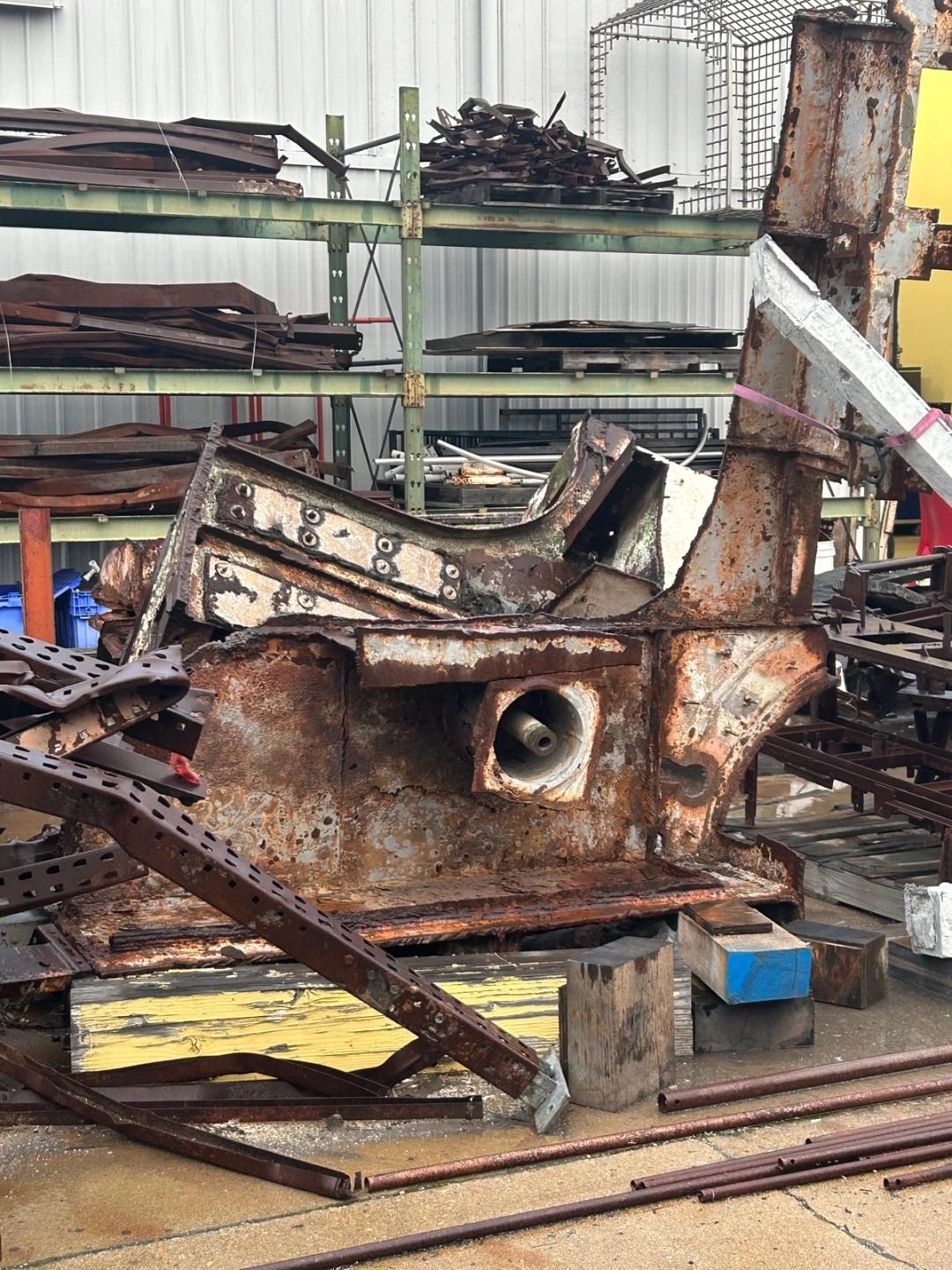
It’s been six years since the 032c Issue #34 dossier, “The Big Flat Now,” which was inspired by visiting Ruby’s studio. Walking between the various buildings of the compound—housing administrative offices, multi-story tall cut-and-sewn textile works, sculptures, paintings-in-progress, a ceramic studio, a scrapyard composed of discarded metals and erected monuments, and an atelier—it’s easy to agree with Jack Self’s comment in the dossier that “cultural production in the third millennium is totally flat.” It’s also this flatness, or lack of “hierarchy or centrality,” that allows Ruby’s work to not only transcend art historical categorization, but to slide imperceptibly between art, fashion, design, and even skateboarding.
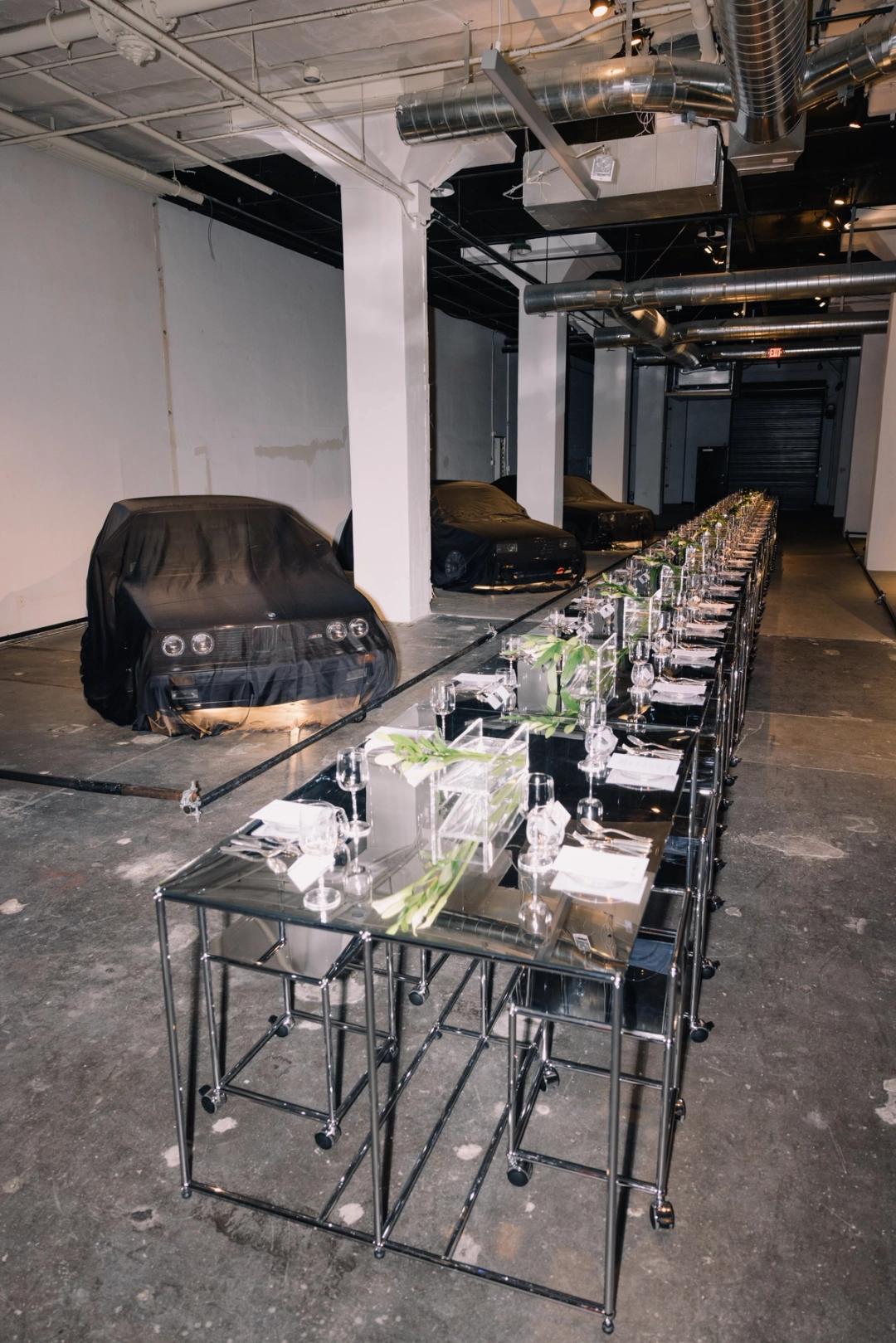
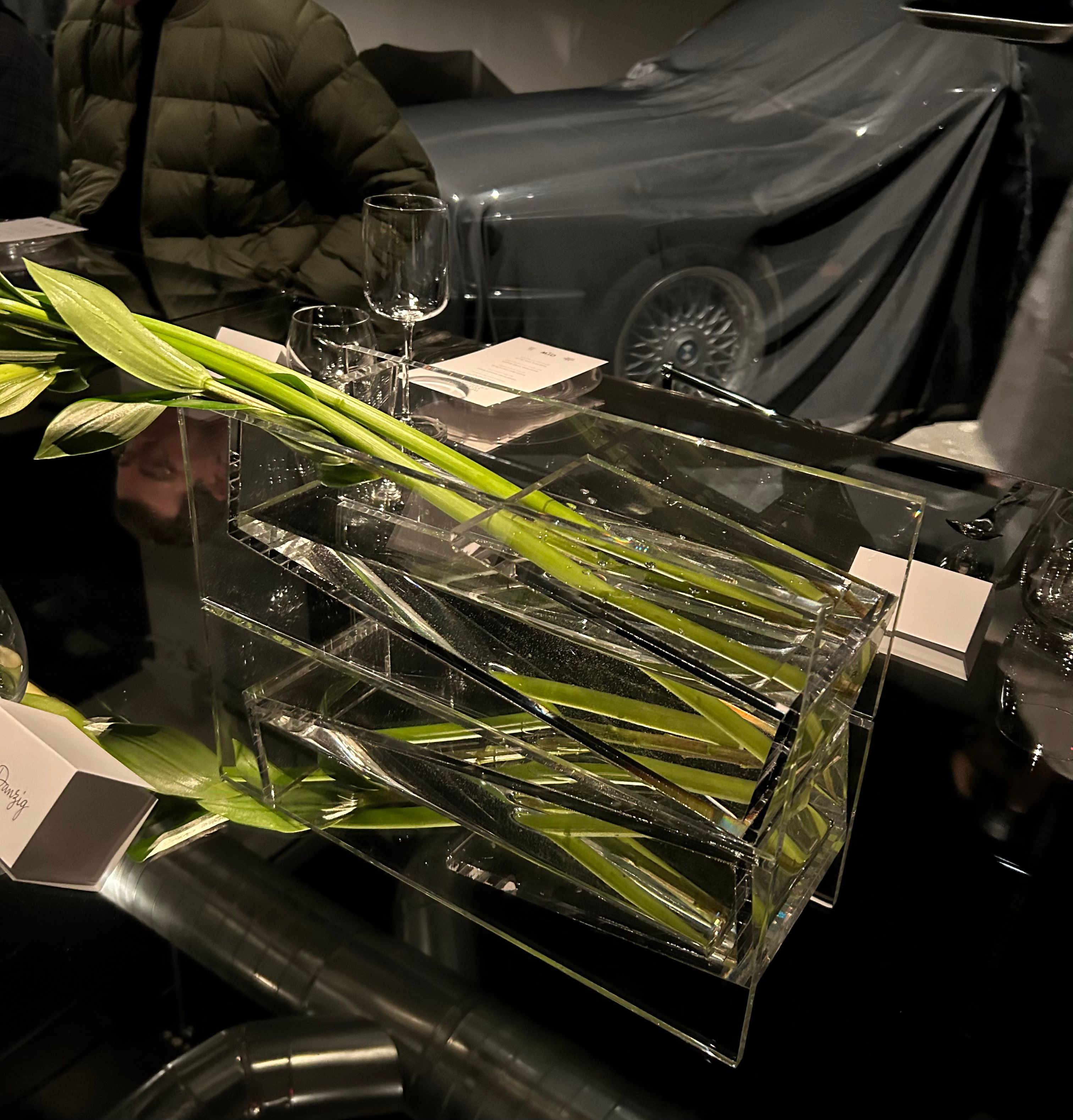
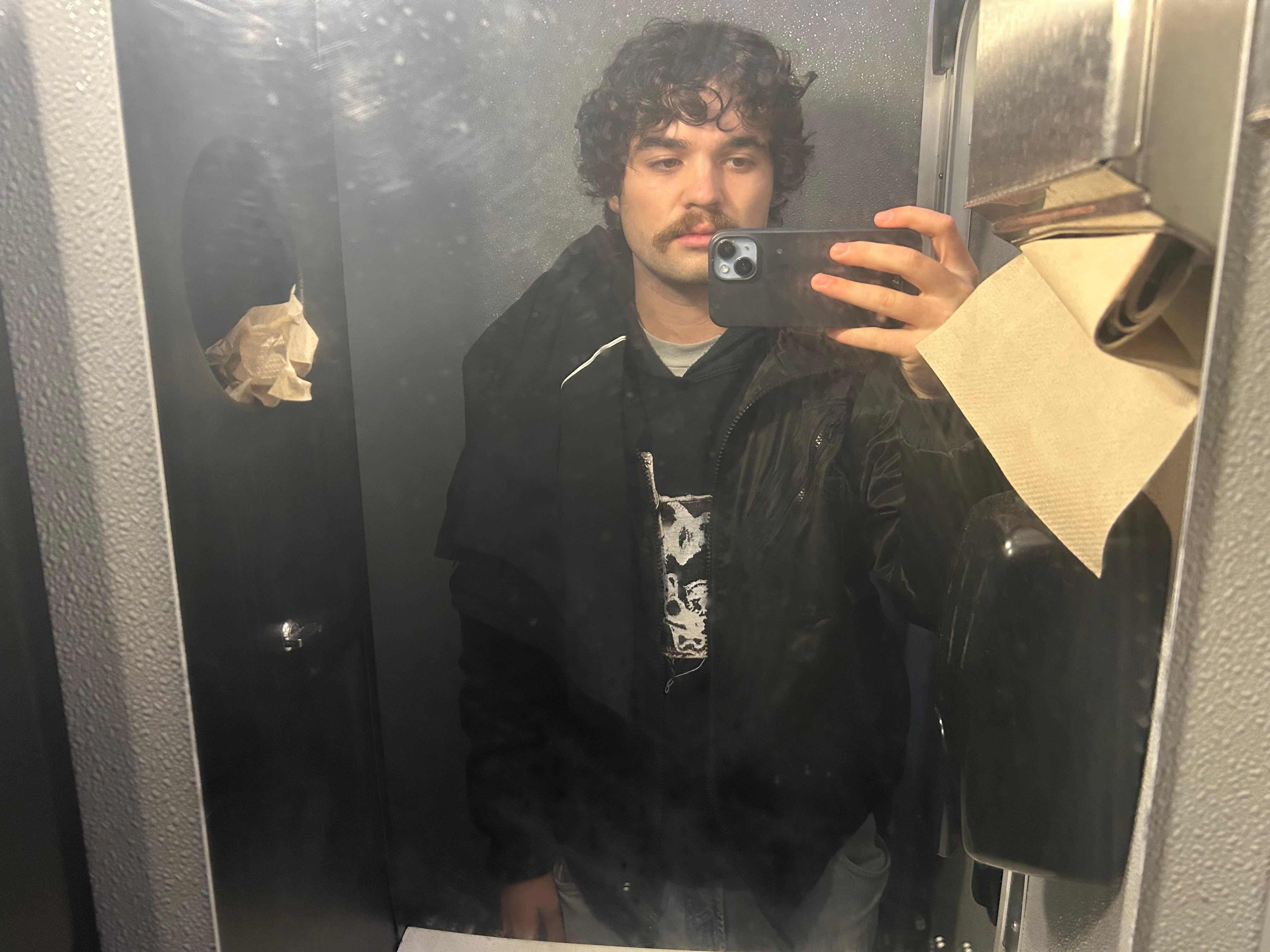
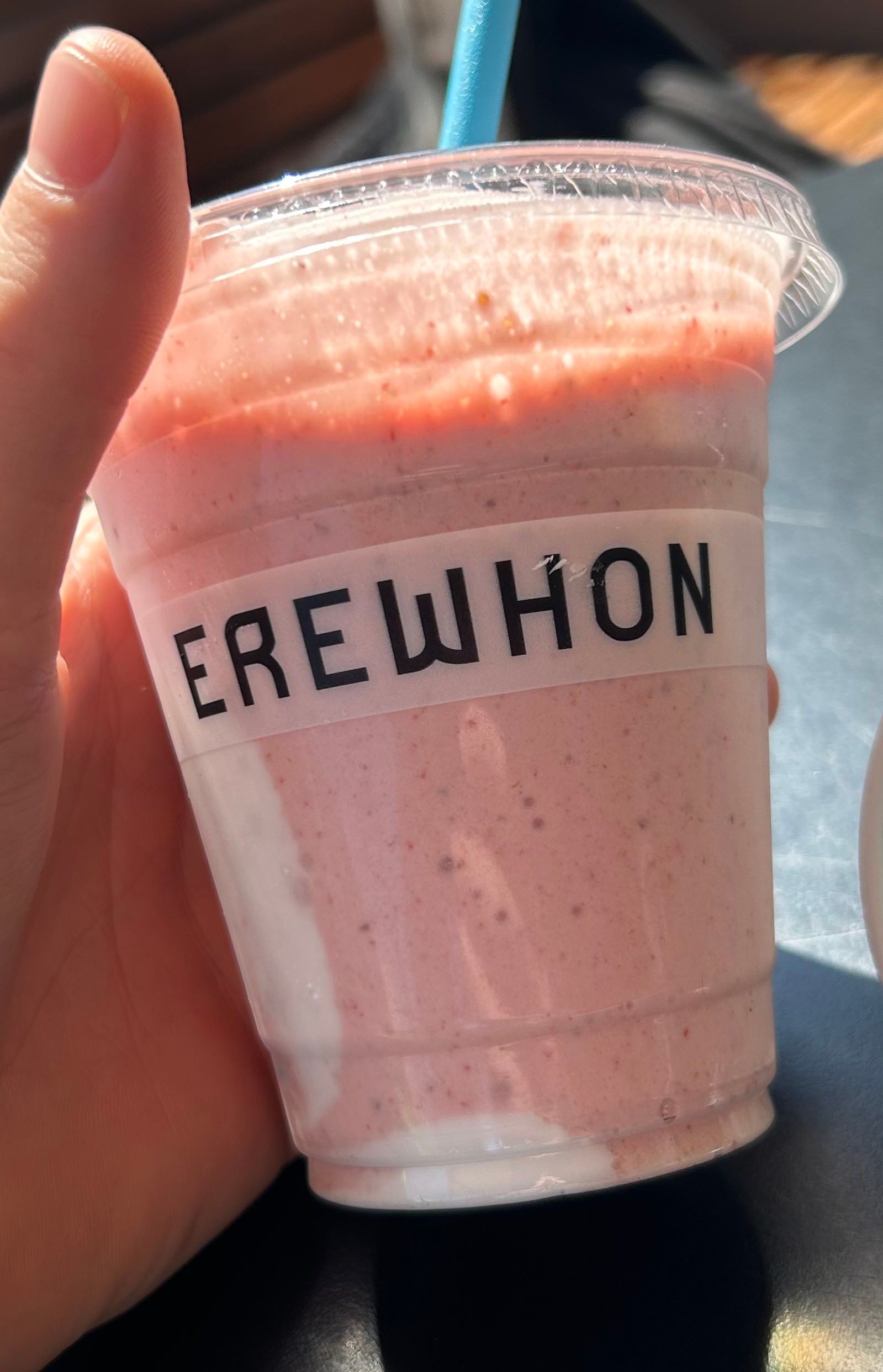
I was in LA for the launch of the first-ever collaboration between Ruby’s clothing brand S.R. STUDIO. LA. CA. and OTW by Vans (and Ruby’s first fashion collaboration other than those he’s undertaken with Raf Simons). The week’s events revolved around the launch of Clash the Wall sneakers, which is an assemblage made from four Vans icons, available in monochromatic neon green or orange. The studio visit was complemented by a special dinner hosted by OTW and S.R. STUDIO. LA. CA. at French food collective We Are Ona’s LA art week pop-up (curated by Marseilles-based chef Valentin Raffali) and a downtown launch party that featured a mammoth skate-able orange structure designed by PLAYLAB, INC. and Ruby. The party was an LA affair with Vans skaters and included Julian Klincewicz activating the structure before the alt hip-hop duo Paris Texas and witch house legends SALEM performed from inside the structure’s James Turrell-esque alcove.
The night before the launch, I had the chance to listen to Ruby, Ian Genoza (VP of Creative Direction for OTW by Vans), and Dylan Petrenka (Design Director at Vans) discuss the unexpected 19th-century inspiration behind Ruby’s fashion design and the intersections between his art practice and the Clash the Wall sneakers—which began with Ruby bringing a prototype of futuristic Dutch clogs to the Vans team.
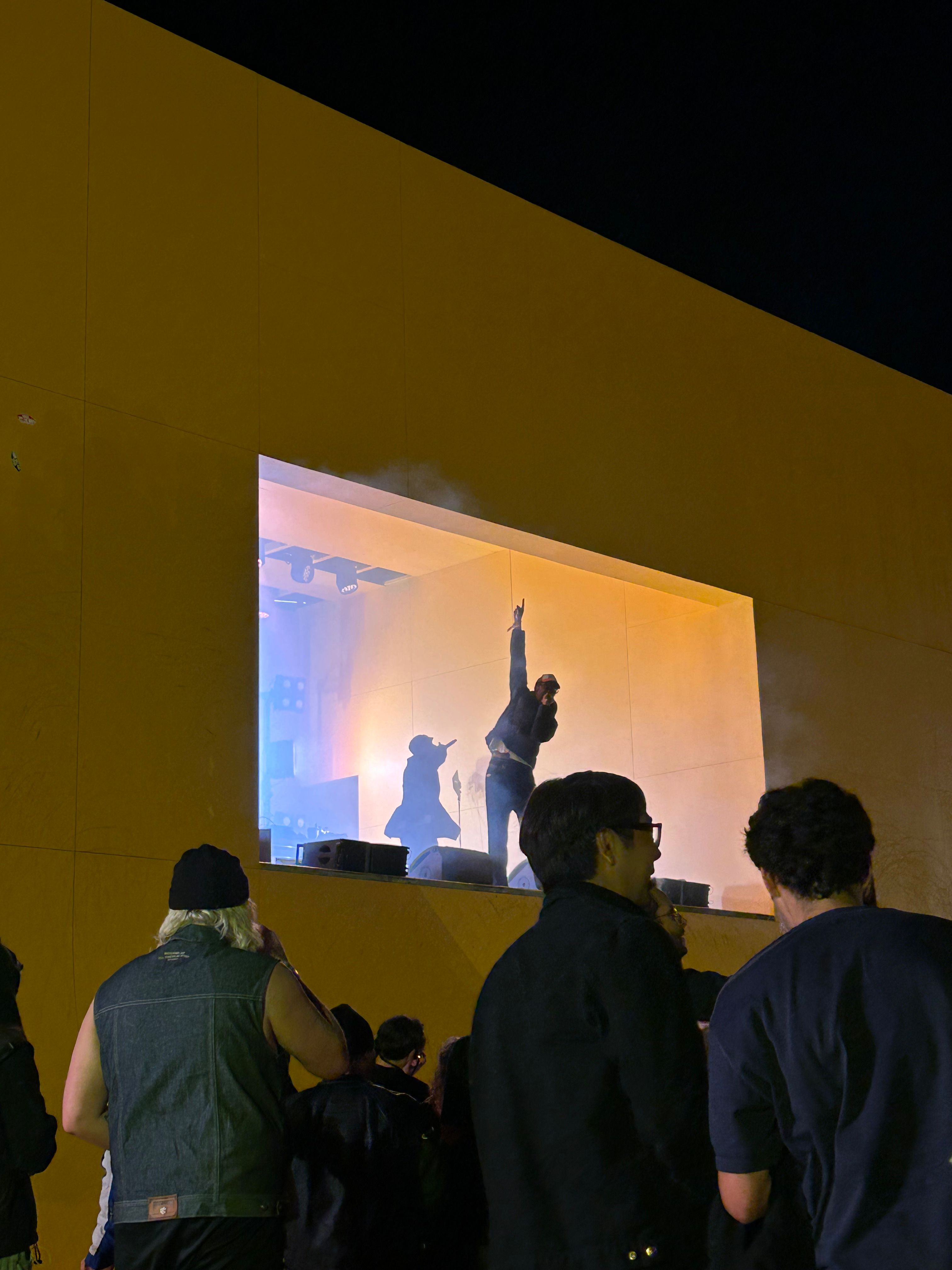
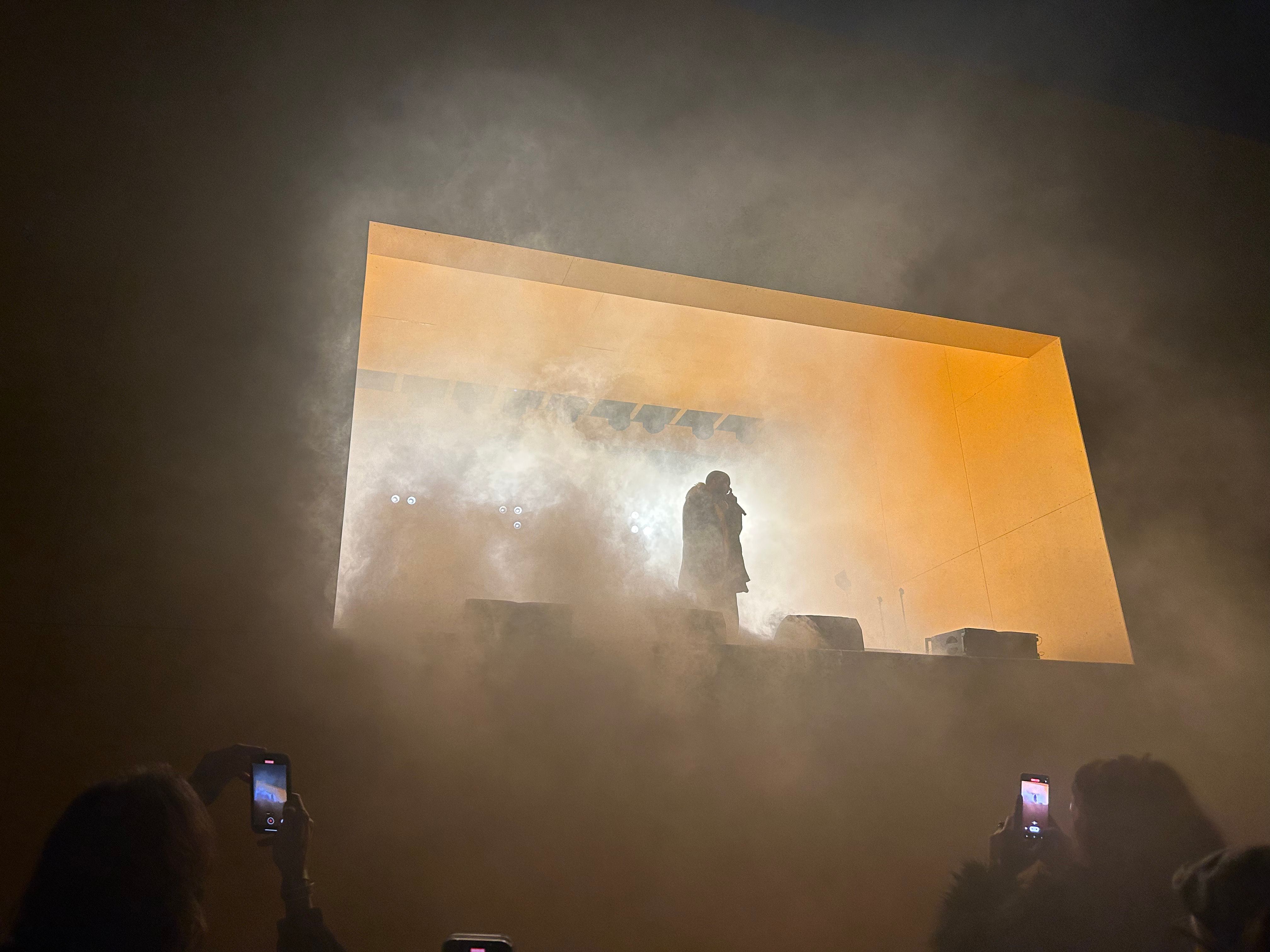
IAN GENOZA: Sterling, maybe you want to talk a bit about the inspiration behind the clog?
STERLING RUBY: Zoe and I started acquiring vintage pieces—which were either Dutch inspired or colonial dresses from the mid-1800s to early 1900s—and wanted to make a monochromatic collection. We had just come off the heels of being invited by the Fédération to do couture, which was wonderful but also taxing. We thought, let’s just work on this at our own pace. Let’s teach ourselves how to build and construct something like that. You’ll see on the [mood] boards, there’s definitely two years’ worth of prototypes and fittings and thoughts going into what this could look like. Should it be a couture collection? We had been approached by some other performers, so the question was: Should it be a ballet, should it be a performance piece?
But during that, we kept thinking that we wanted to develop this shoe, this clog. I started doing sketches. I don’t want to say it’s directly derived from architecture, but it’s architectural. I’ve always been fascinated by a Zaha Hadid building. These things had to be brought together. When Ian and Dylan and I started talking, I realized that we had been so embedded in this slow, methodical work that was probably only going to produce two or three dresses per style that we forgot that there is an entire other world of industrial design and larger factories that we’ve never been able to work with. When we approached Ian with this particular shoe, I think it probably took him back a little. But I think it was also them coming on board with Vans and wanting to reinvent what the company represents. We’re working on a number of other accessories, bags, hats, and socks. But that shoe was the bridge between these two extremely different endeavors.
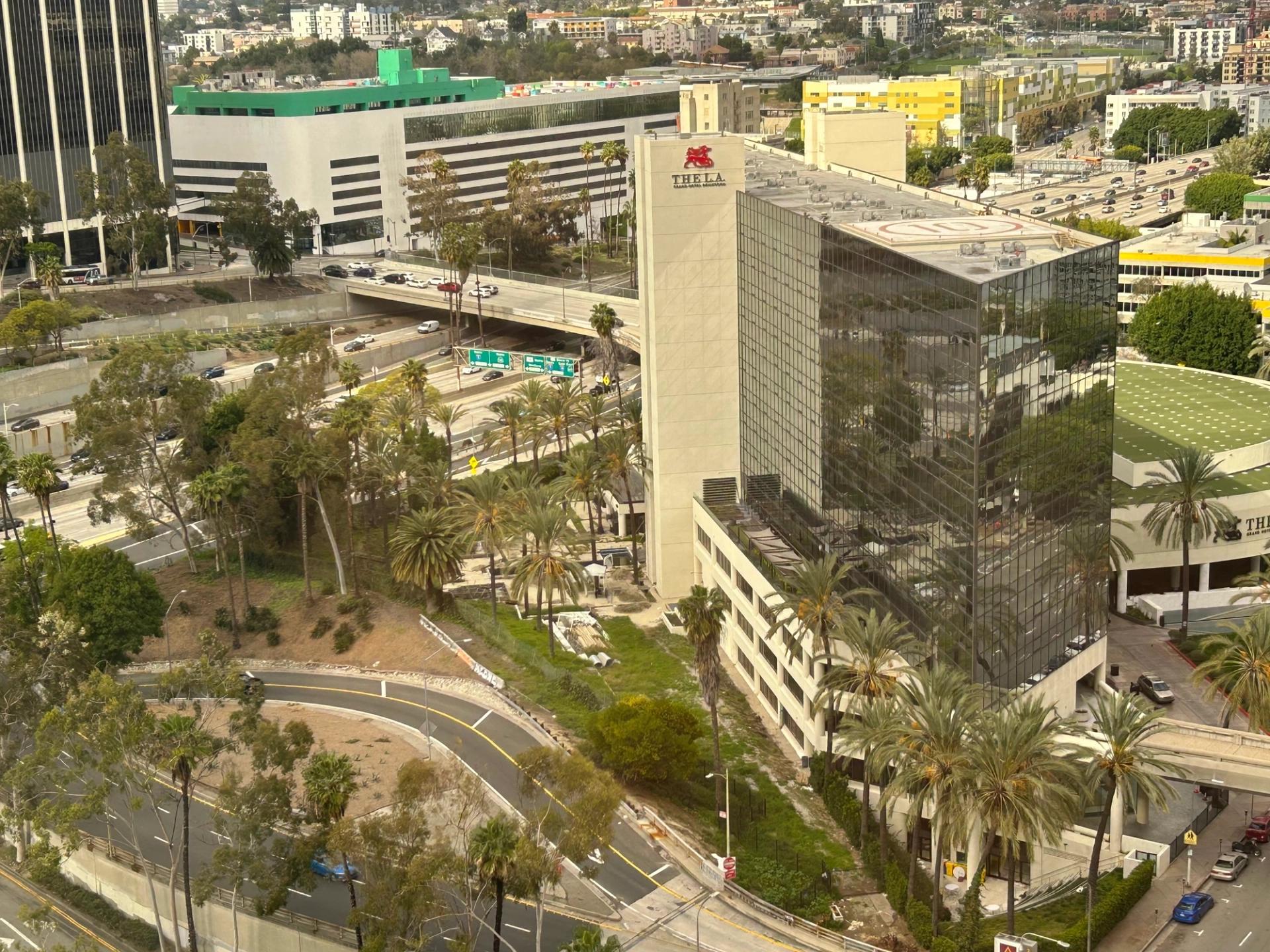
It’s definitely pushing things into a future for us [S.R. STUDIO. LA. CA.]. We’ve never been able to do that. We’ve done small works. We’ve made things that were very difficult for us to produce, not only in the studio but also in other factories. And sometimes they work and sometimes they don’t. So, to invest in something like this and to even have a factory willing to work with us almost seemed impossible. And, you know, the clog, it’s something we weren’t able to produce ourselves, so that definitely feels futuristic for me.
DYLAN PETRENKA: The same can be said for Vans and that’s why we’re excited. We had already talked about reinventing some of our classics. We certainly couldn’t do that without this partnership or this futuristic clog. And I enjoyed the contrast between the inner form and the outer form, playing with something that was softer and a bit more organic.
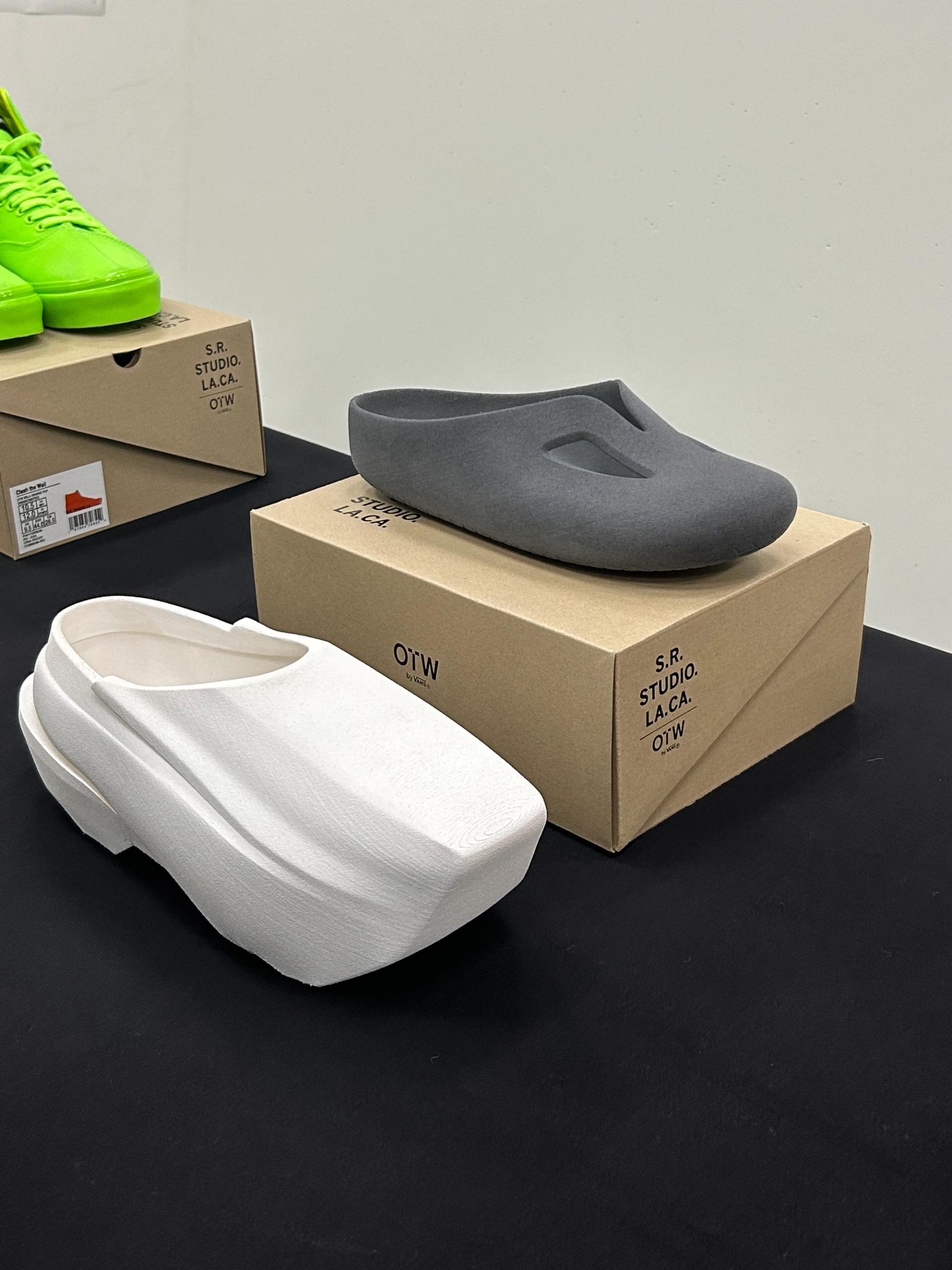
IG: I think a collaboration is about two entities coming together to get to a space that we couldn’t get to on our own. And I think what Sterling bringing the clog provoked in us was like, “Okay, let’s figure out how to make this but also, what about creating a footwear system?” Now we have this Mary Jane that goes into it, so you can wear it and remove it, it’s modular. This sparked something very progressive for us. And it challenged our manufacturing and our design team. I think good stuff comes from those challenges and what those things provoke.
The context is interesting too. I think tomorrow night [the launch party] is a great example of that. We’re taking a skateboard environment, questioning what it is, and creating a more sculptural structure. The beautiful thing about skaters is the way they look at the world—with a bench, a pedestrian sees a place to sit, but a skateboarder sees a million and one possibilities, right? What we want to push in conversations is not just products, but also environments. What would it look like if Tadao Ando built a [skate] bowl? What would it look if Sterling helped to form skate-able architecture?
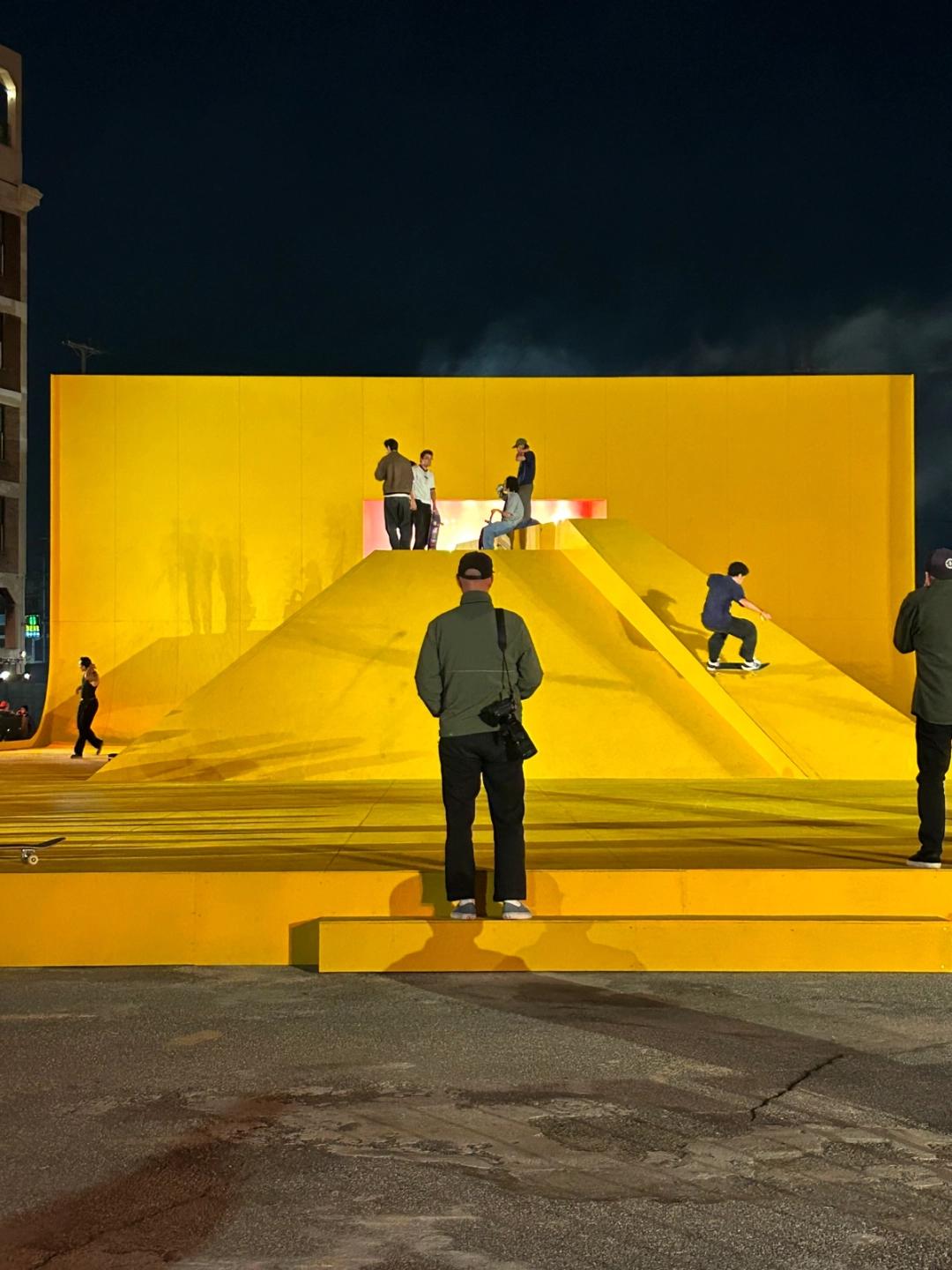
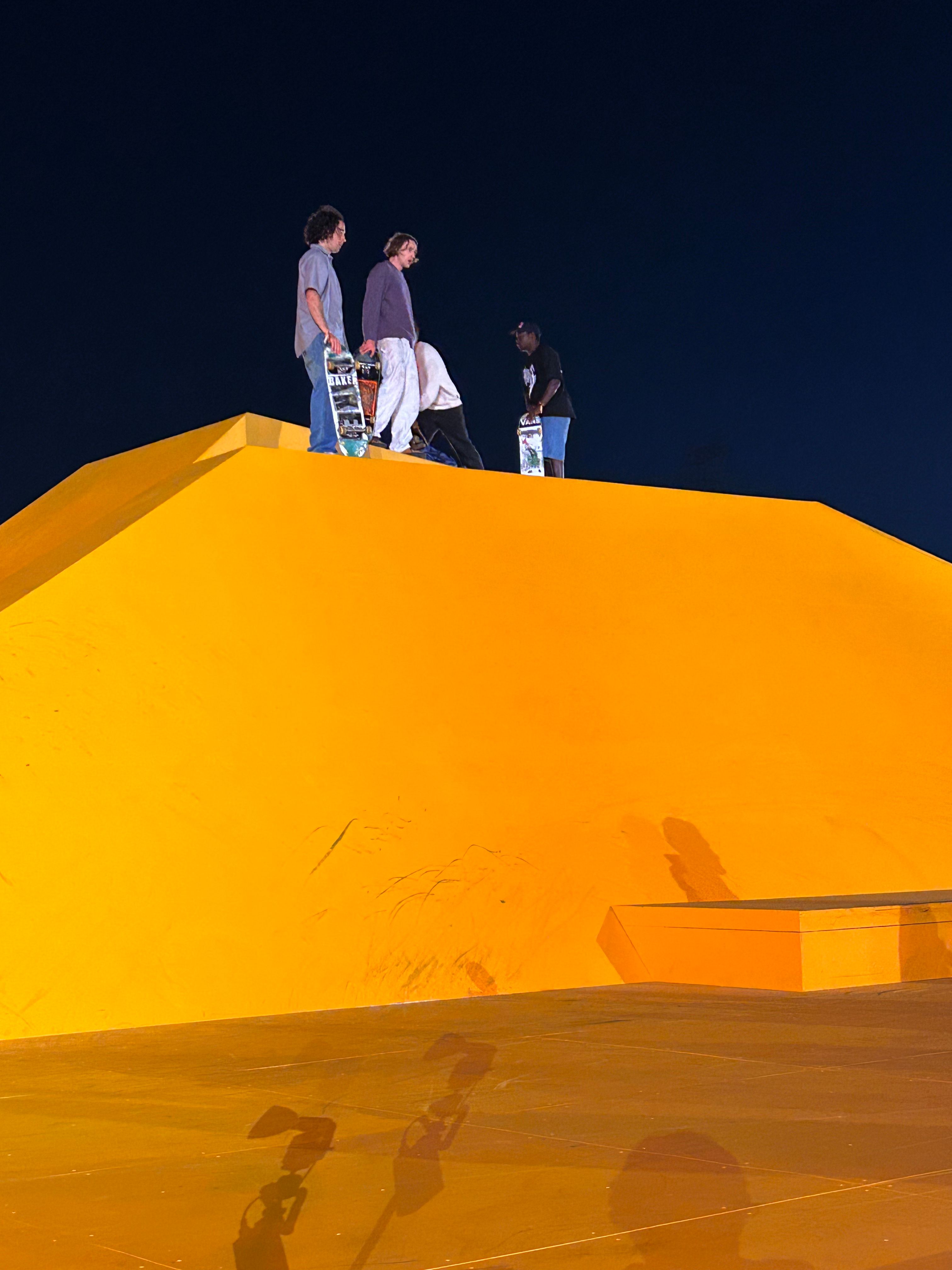
PHILLIP PYLE: In the seams of the Clash the Wall sneaker, you can sense the collage or assemblage element materially, which is something that was very present to me when I was in your studio. Then, with the more austere clog, it’s more of a thematic and temporal collage that you’re going for. Could you talk more about other formal concerns in your art practice that have informed this collaboration with Vans and with the couture line you’re developing for S.R. STUDIO. LA. CA.?
SR: I’m always looking at formal connections, whether it be a sculpture, painting, small works on paper, or a collage. And that was the first thing that I saw with this. Dylan and Ian brought this mash-up of these four Vans models but in a very jarring, checker-style side, blue-side way, you know? And I kept looking at the kind of slice. I don’t know if you saw the red and blue urethane sculpture up front (USA USERIPPER, 2011). Optically, when you move around that sculpture, the density of the urethane creates this mirrored haze, and it collapses space. You can’t see where the blue and the red start, depending on where you’re standing. And I immediately thought, that’s happening here, too, with the Clash the Wall sneaker. It’s a mind trip, especially when you’re looking at it from a few feet away. My son has been wearing a pair of the green ones for the past two weeks, and I keep looking at his feet. They’re getting a little dirtier, so the lines are becoming more defined.
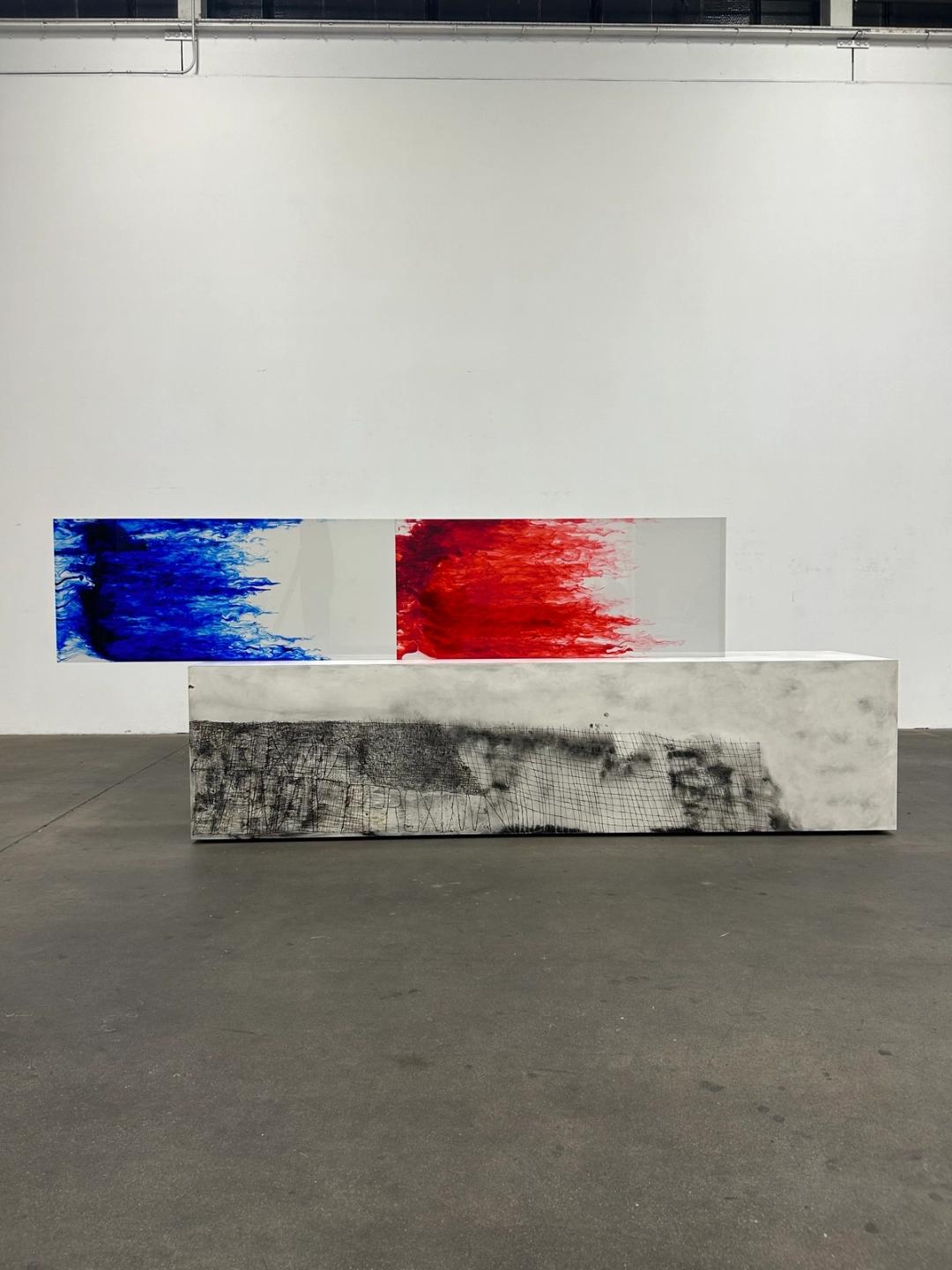
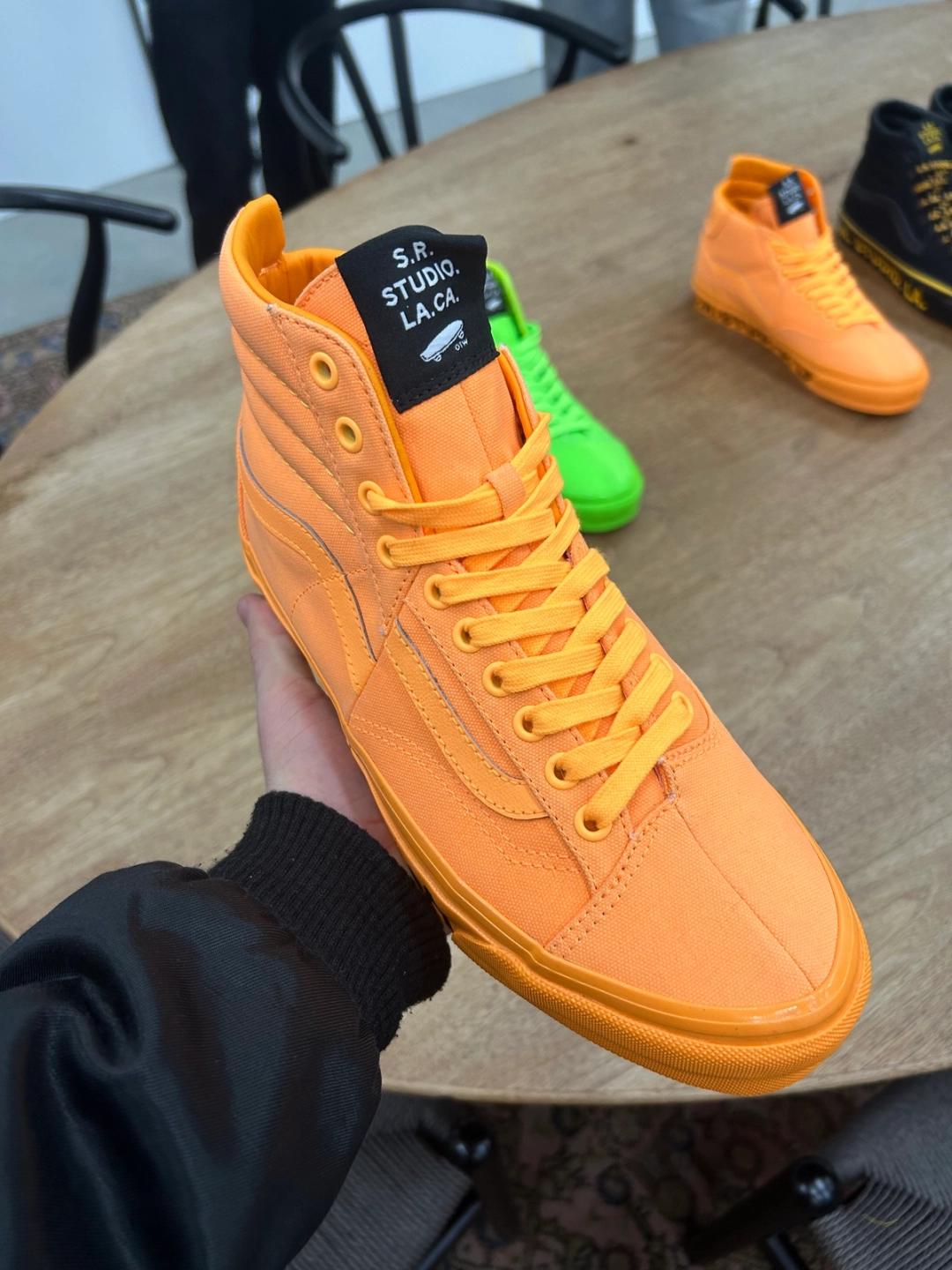
This is also, for me, about speed. When we were developing this, I wanted to have something that had a lot of speed to it because the dresses [in the couture line] are flowing, soft, and slow. I wanted the shoes to have more a jarring speed to them. I’ve done metal sculptures that feel that way. I’ve done fiberglass sculptures that feel that way. A lot of the newer turbine paintings that I’m working on right now feel that way.
Also, we have a couple of very good friends who are dancers, and they’re doing a residency at Benjamin Millepied’s LA Dance Project downtown. The pair that we had made at the time, which were a 3D prototype, were pretty shabby. I had a dancer friend wear them for a couple of hours, and just the way that they popped felt like speed to me. It was beautiful to see this clunky, heavy form on the foot of this elegant dancer. She was using them in a way that even her jumps had a lot of momentum to them. And then, with landing, stalling, rocking back and forth—it was like the thing had a mind of its own.
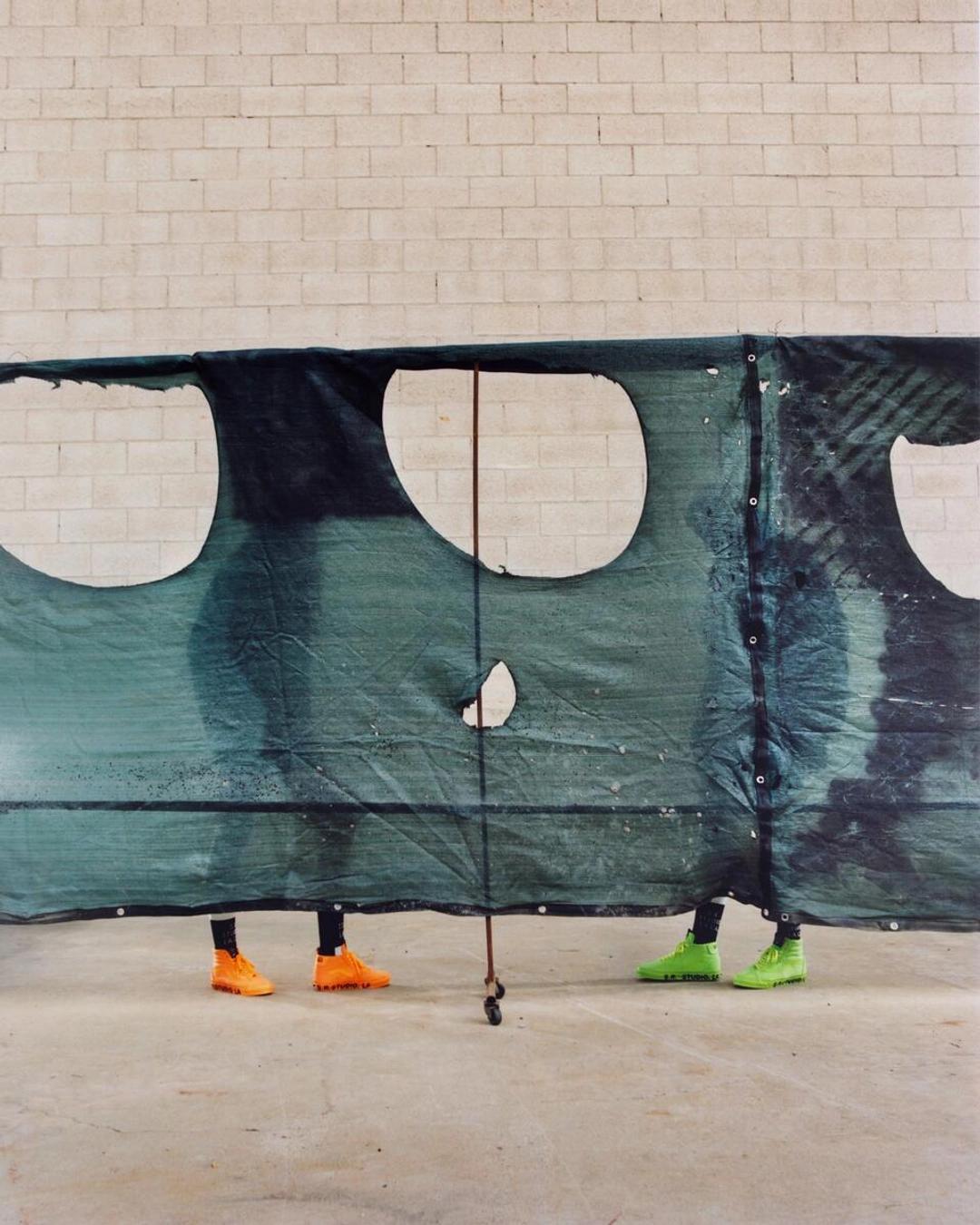
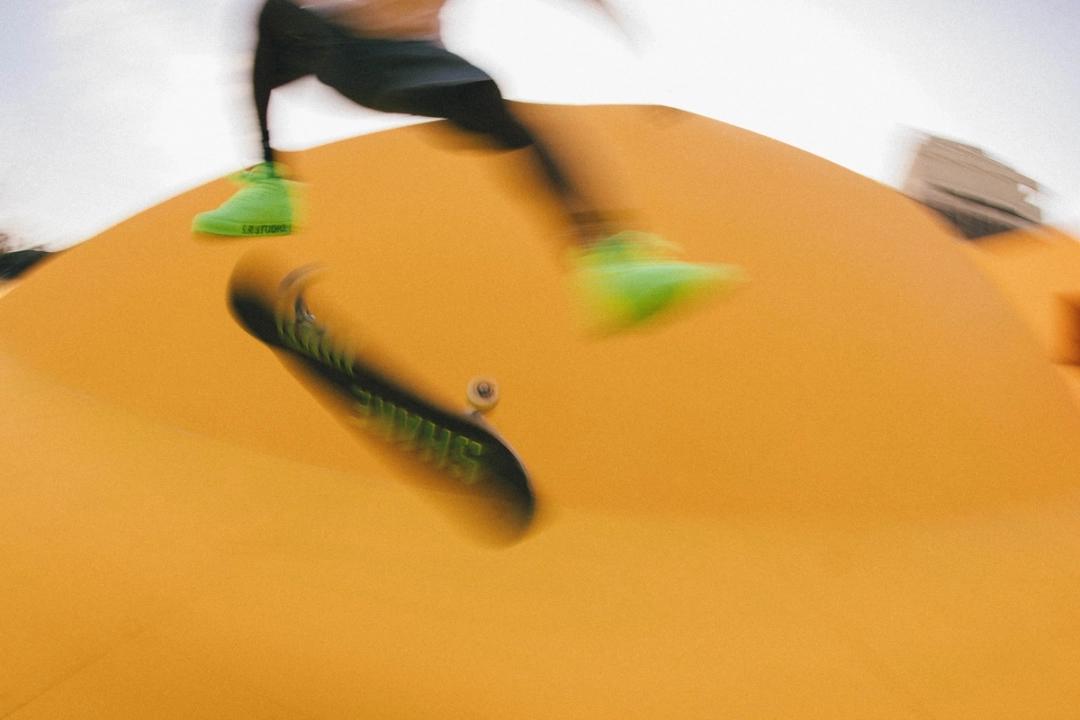
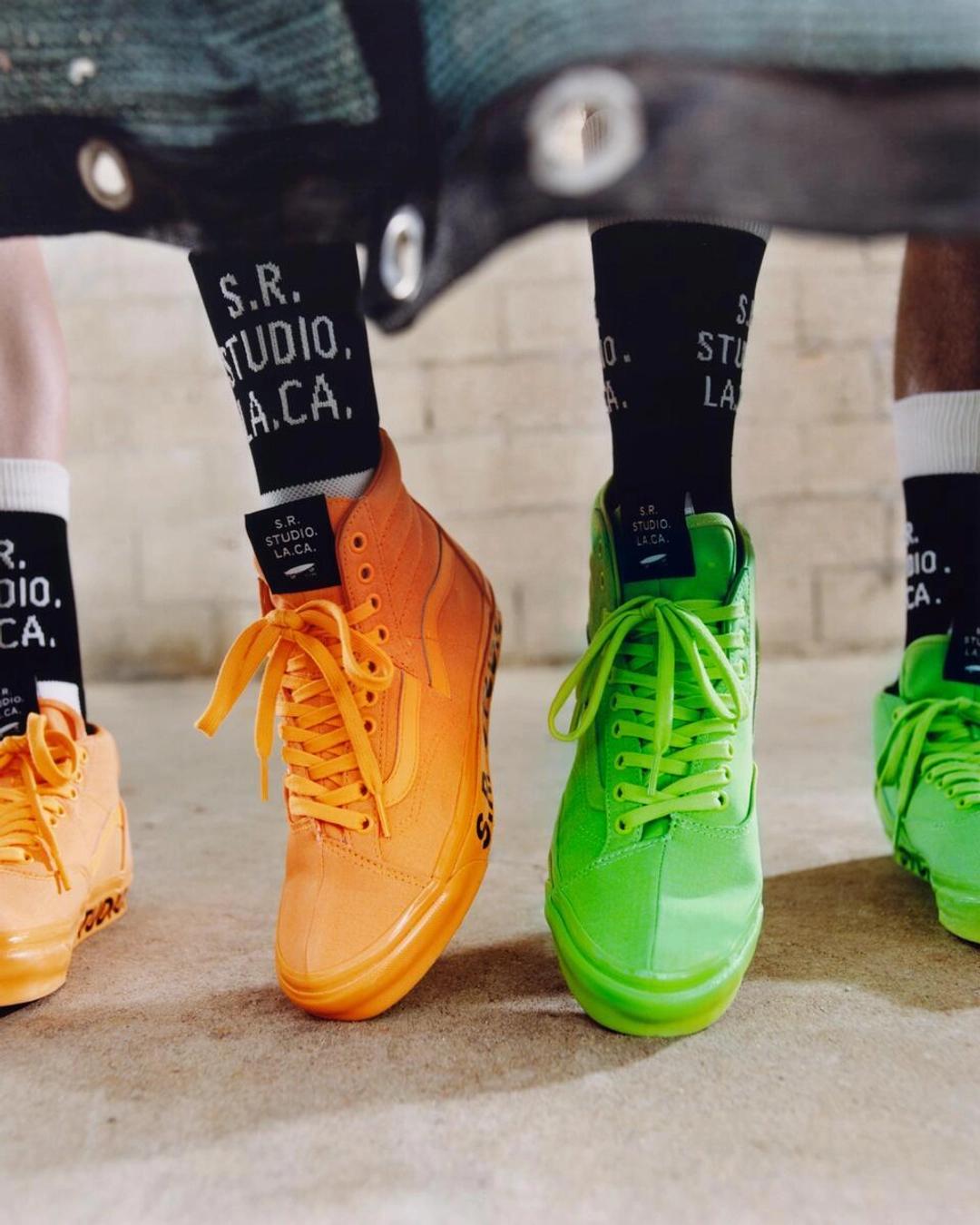
The Clash the Wall sneakers are the first release in an ongoing collaboration between S.R. STUDIO. LA. CA. And OTW by Vans.
Credits
- Text: PHILLIP PYLE
Related Content
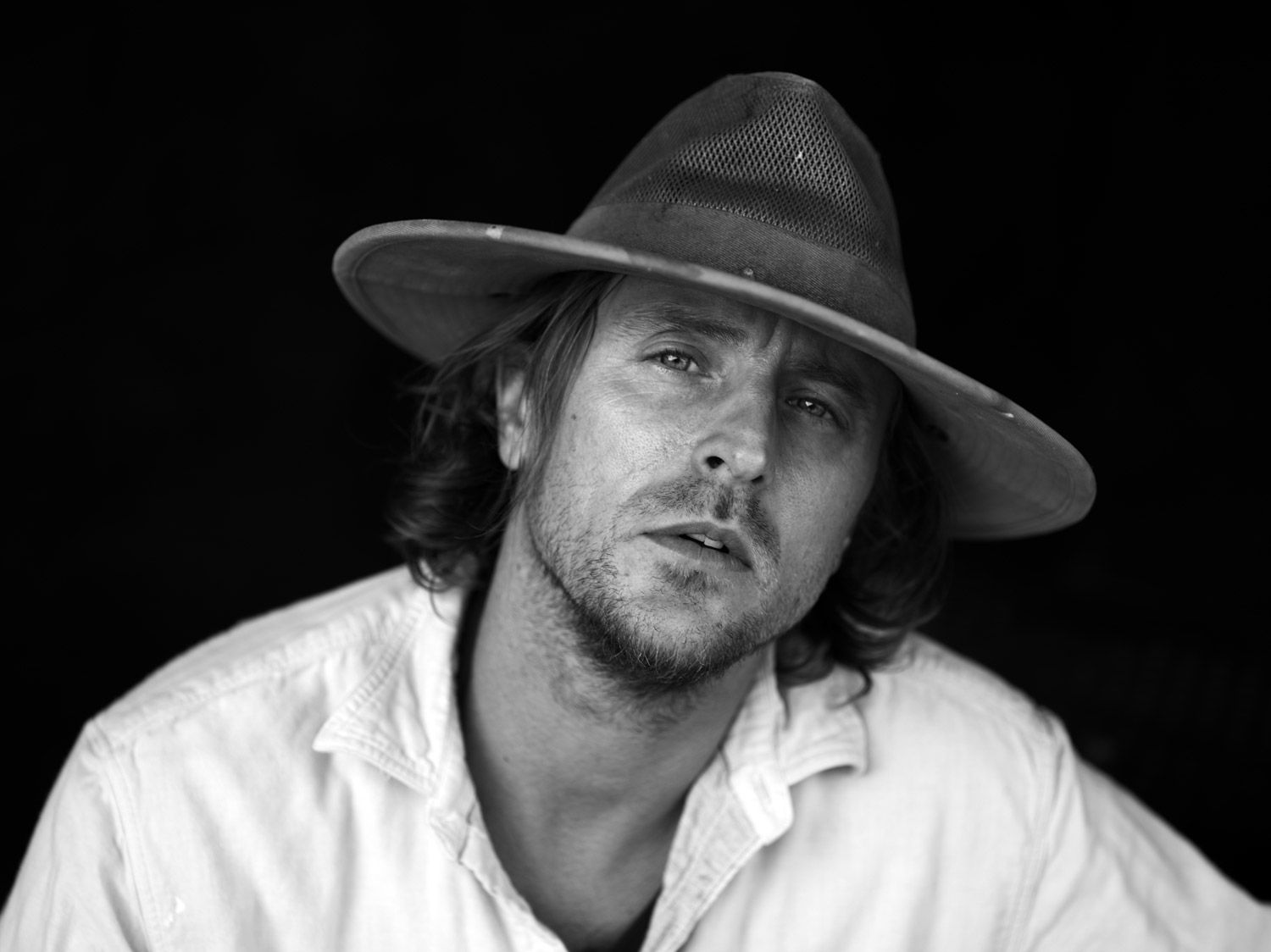
2Traps Supermax
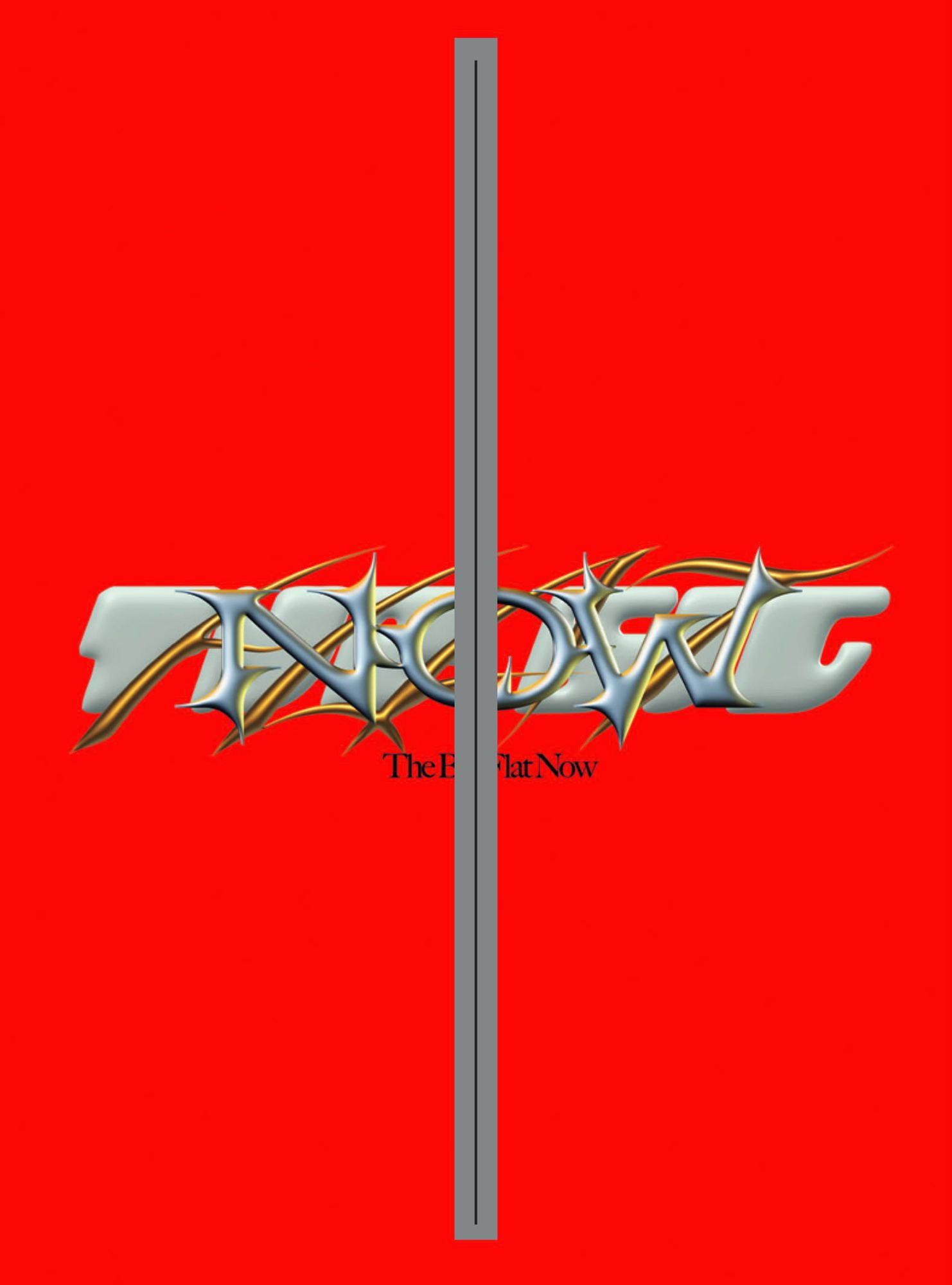
THE BIG FLAT NOW: Power, Flatness, and Nowness in the Third Millennium
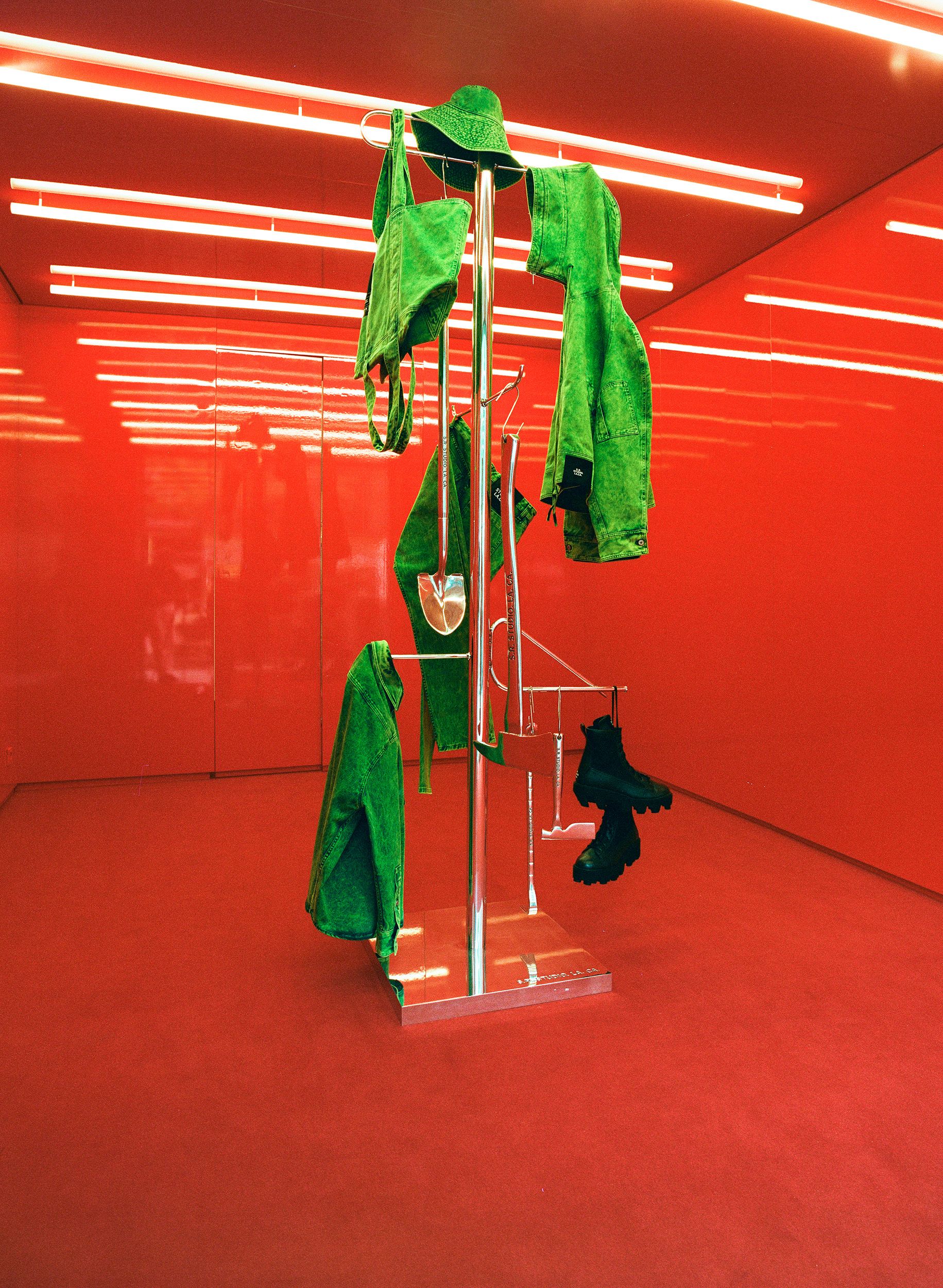
032c WORKSHOP Opens in Berlin-Charlottenburg
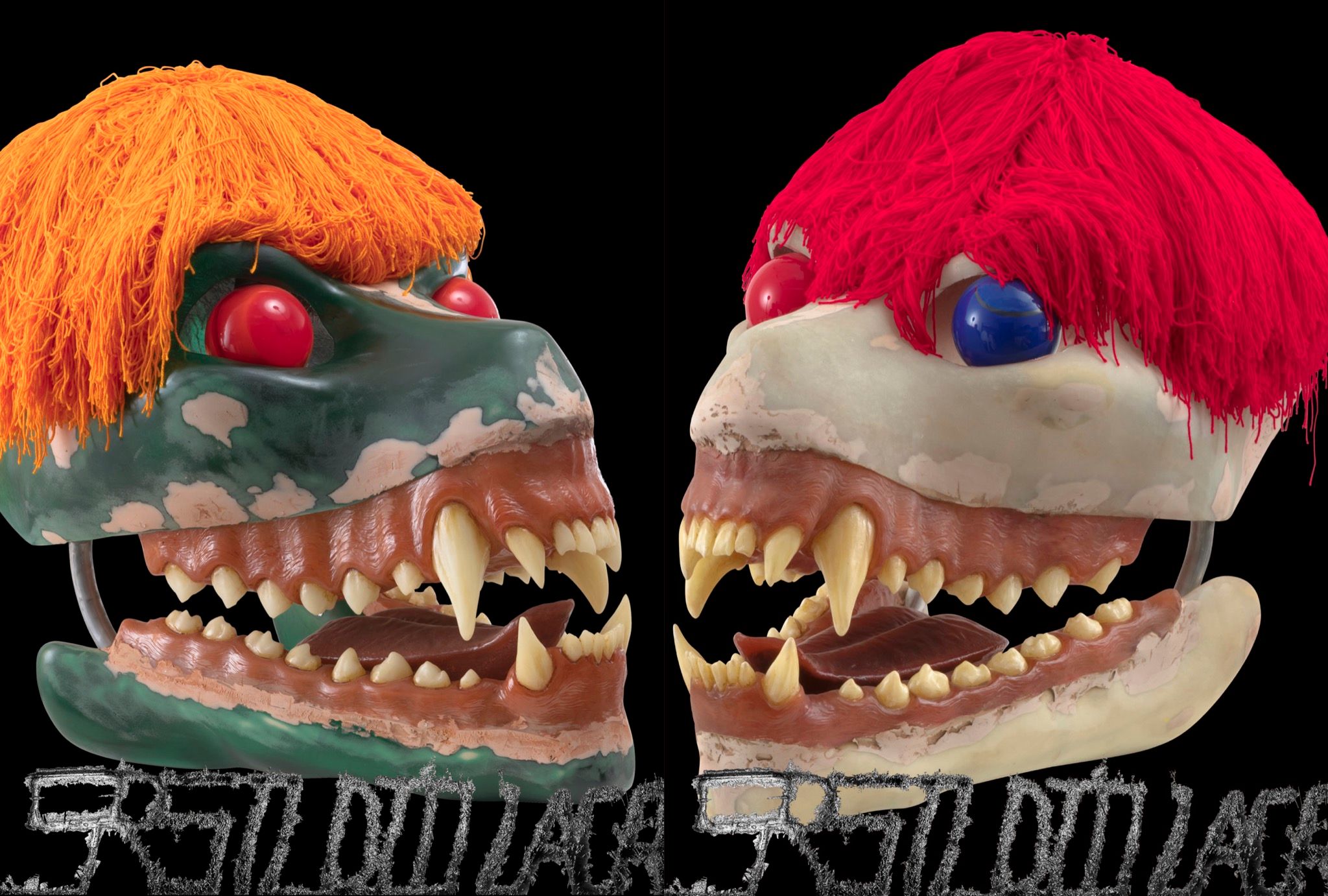
STERLING RUBY. STUDIO. LA. CA.
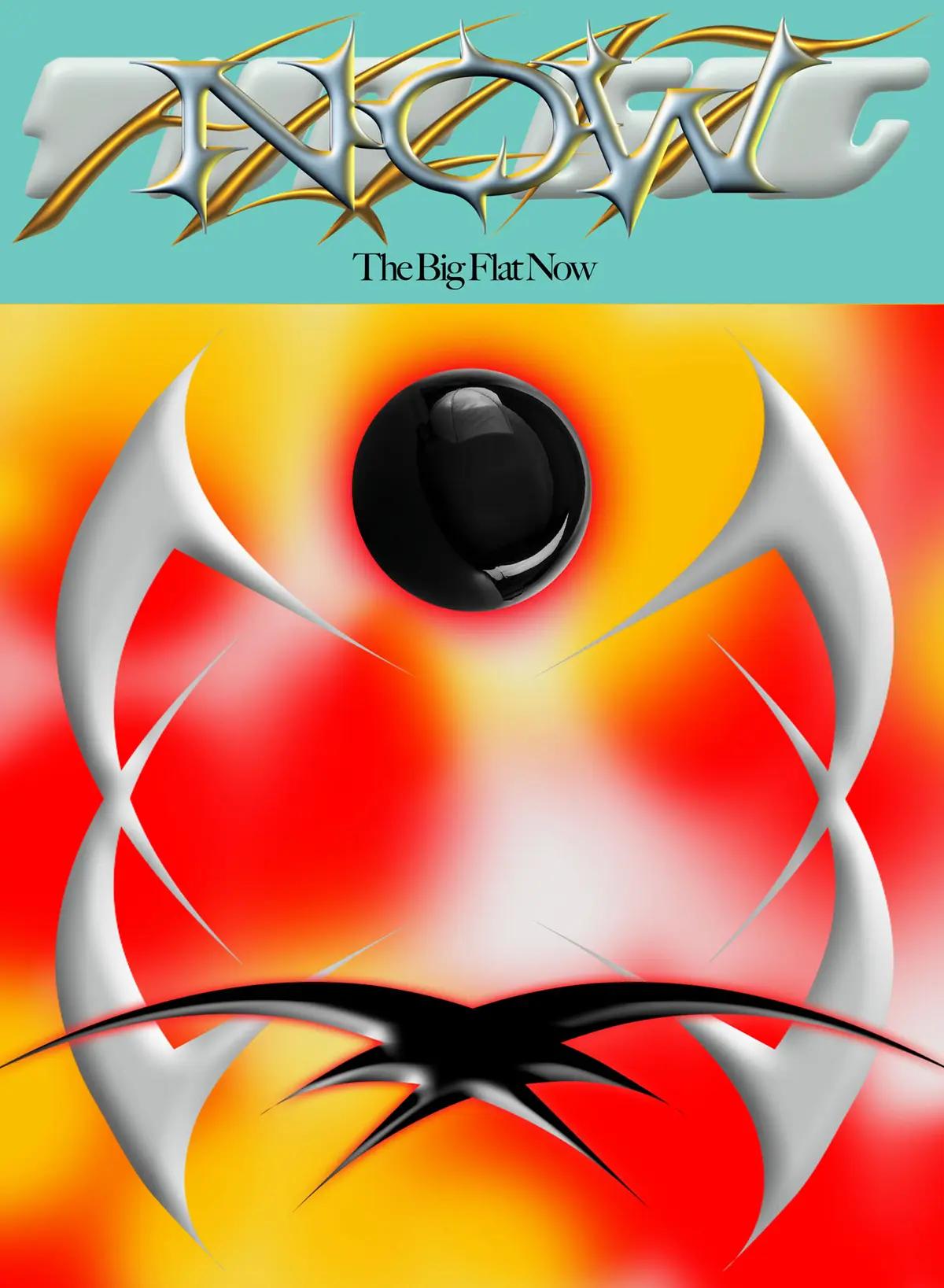
We regret to inform you that there is no future. Nor is there a past. Music, art, technology, pop culture, and fashion have evaporated as well. There is only one thing left: THE BIG FLAT NOW.
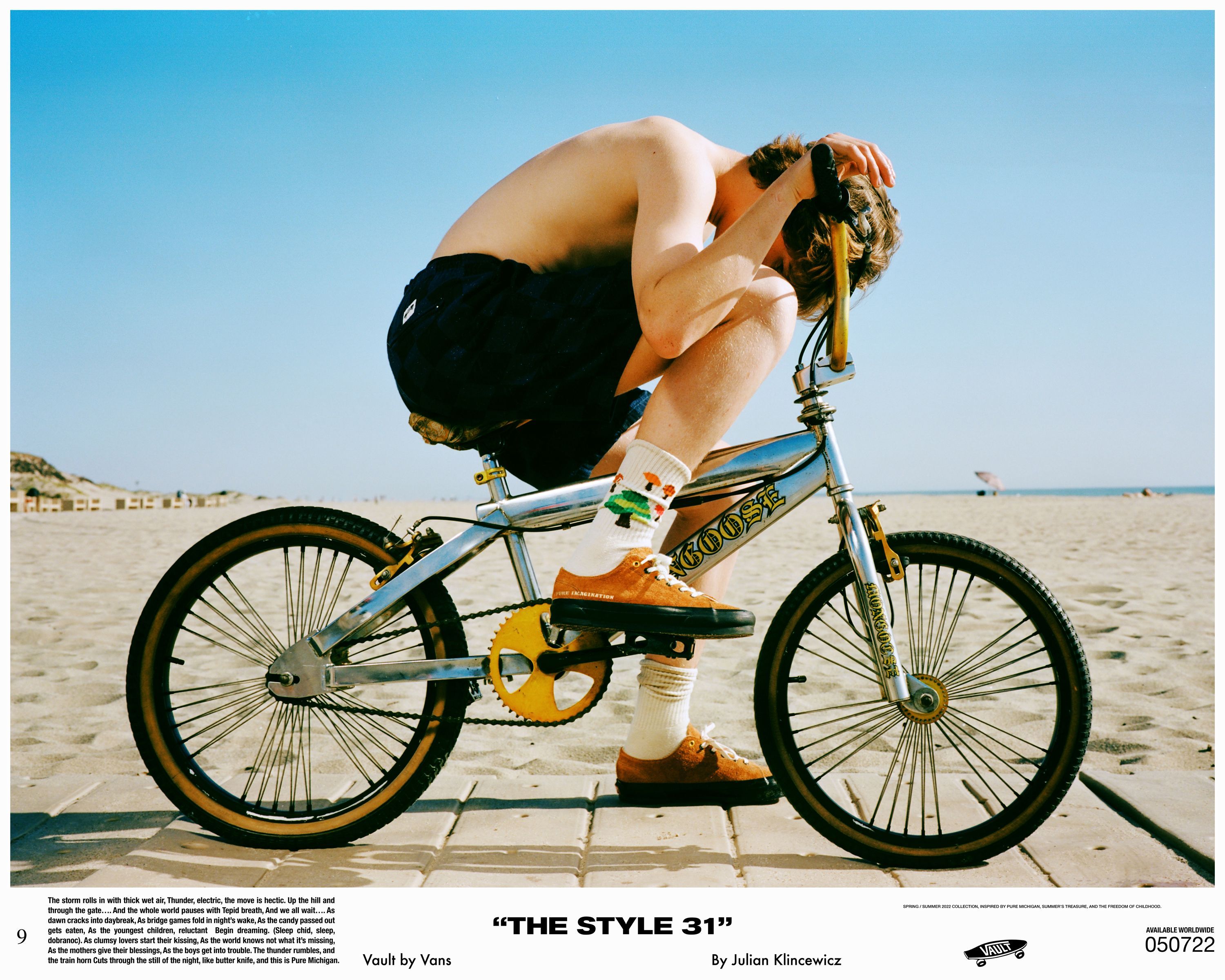
JULIAN KLINCEWICZ: The Wunderkind, All Grown Up
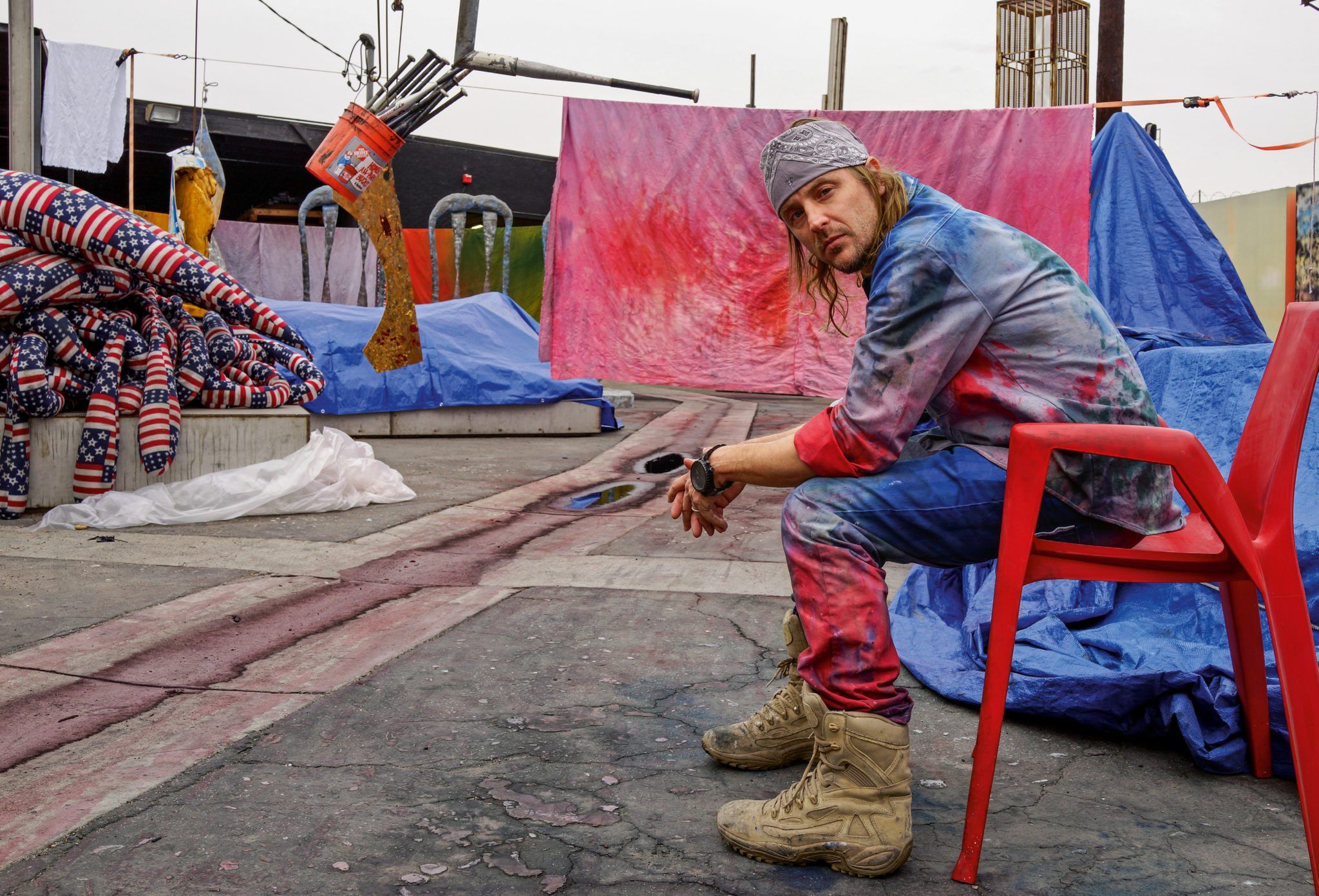
STERLING RUBY: WORK WEAR
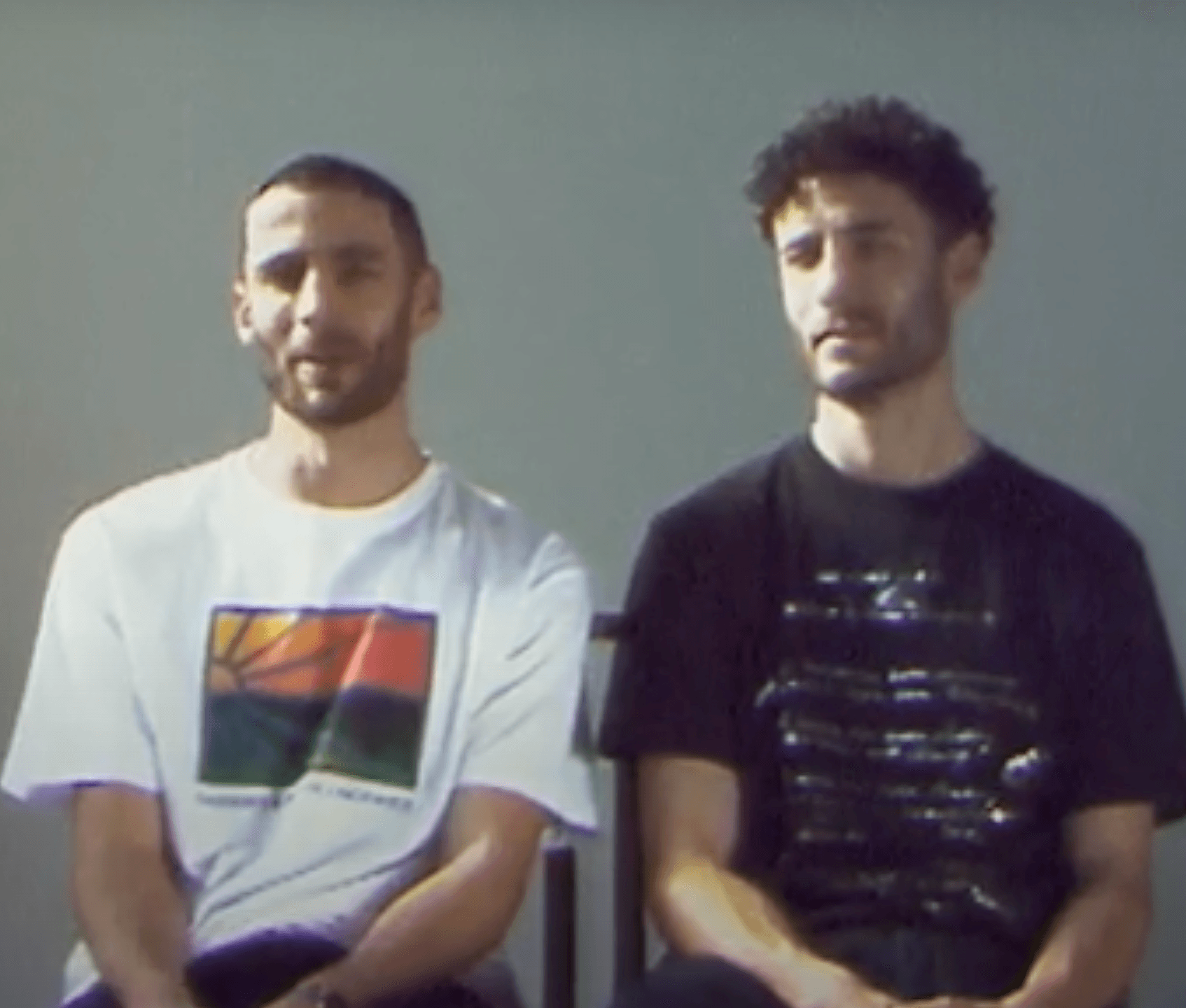
Do We Want Anarchy Or Guerilla Warfare? Julian Klincewicz & RASSVET